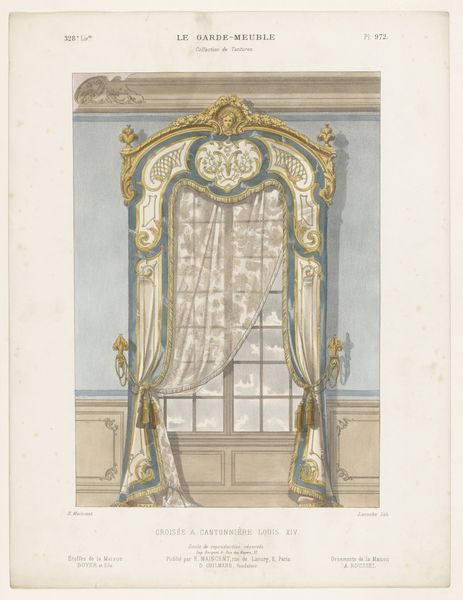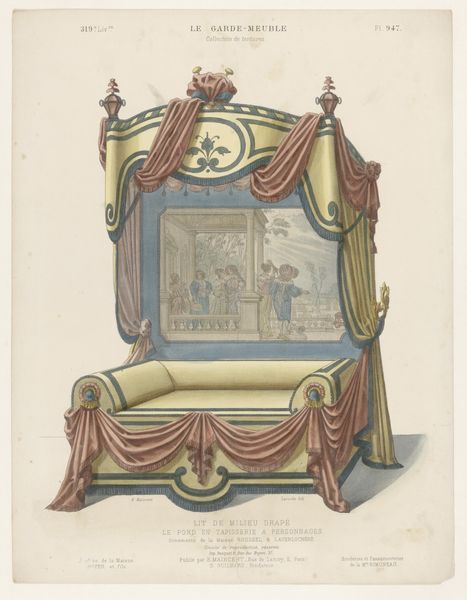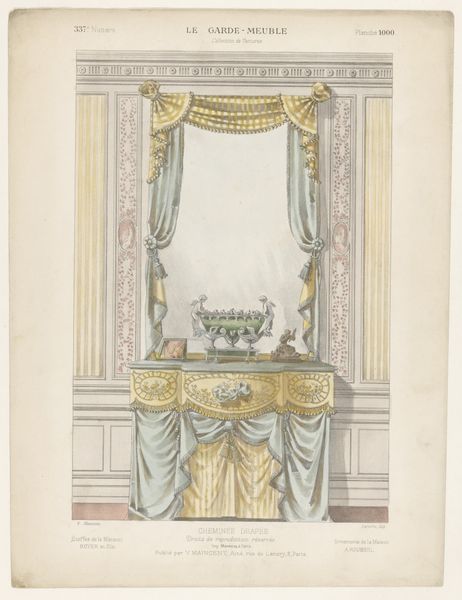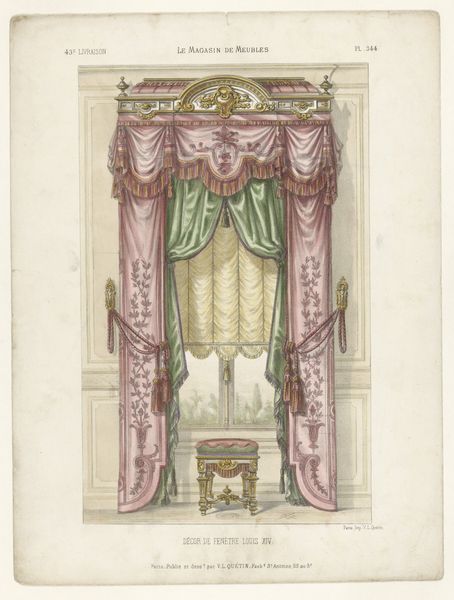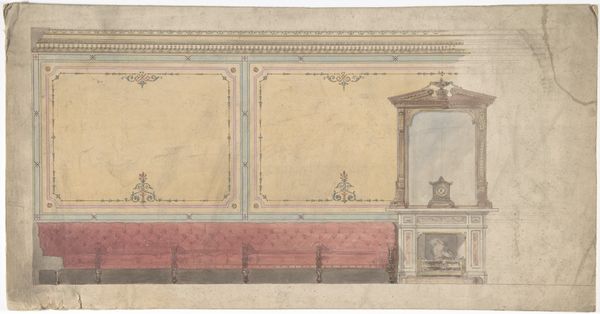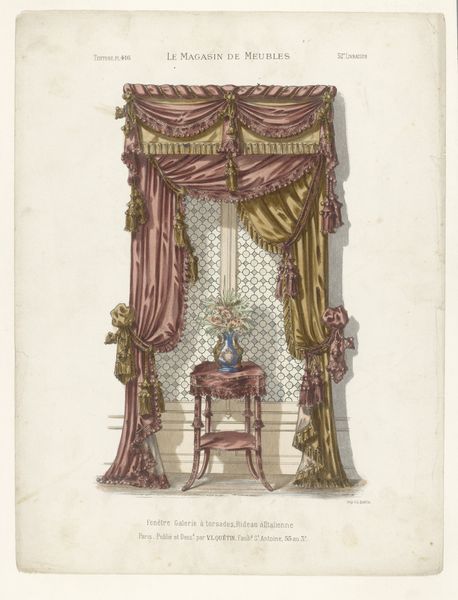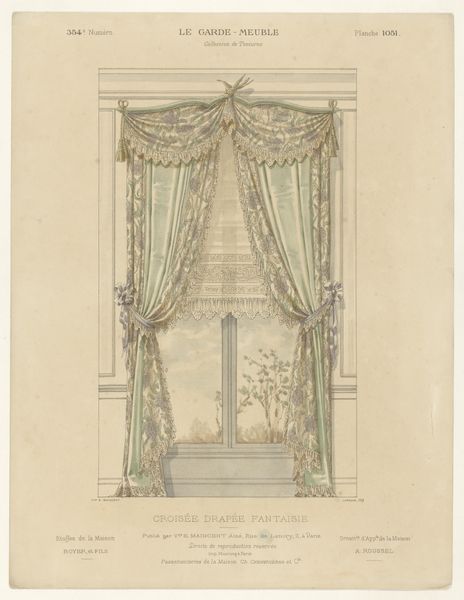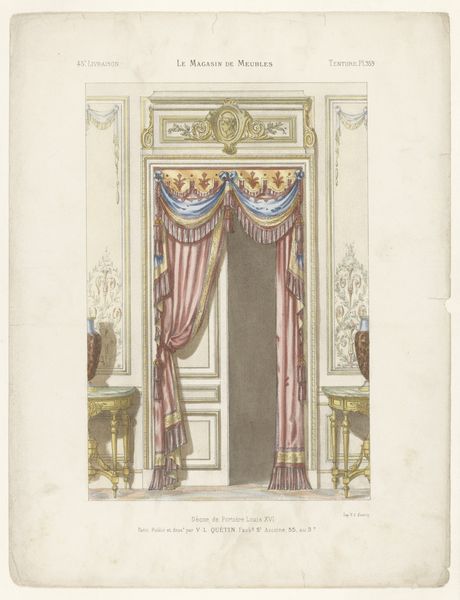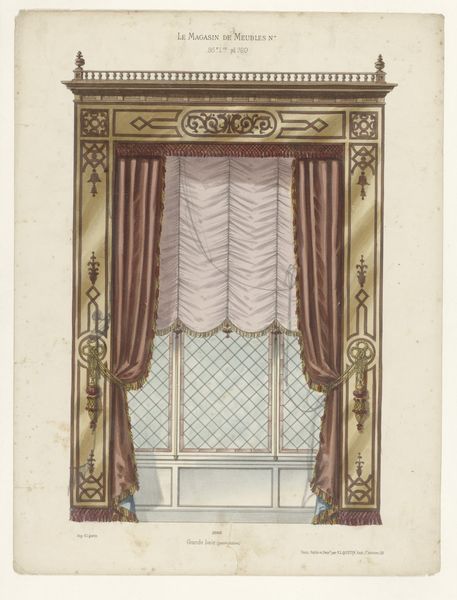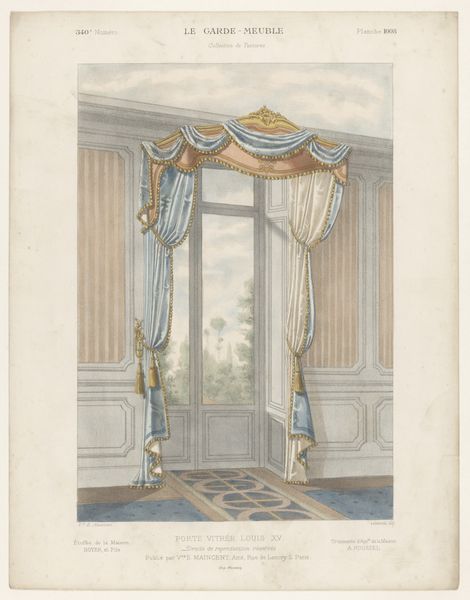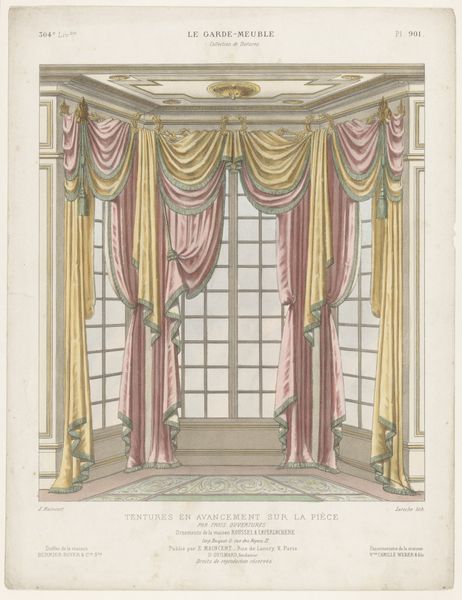
Dimensions: height 359 mm, width 277 mm
Copyright: Rijks Museum: Open Domain
Curator: Let's examine this fascinating print, “Haard met draperieën,” or “Fireplace with Draperies,” created circa 1885-1895 by Léon Laroche. It showcases a meticulously designed fireplace ensemble. What’s your immediate impression? Editor: An overwhelming sense of opulence, yet strangely sterile. The rendering is so precise; I'm struck by the careful balance of the composition, particularly how the central clock anchors the swirling fabric. The subdued watercolor palette also evokes an air of aristocratic reserve, not exactly the inviting warmth one would expect from a hearth. Curator: Interesting, I see it somewhat differently. Keep in mind that this print belongs to a broader movement toward the democratization of design. "Le Garde-Meuble", which is printed across the top of this page, was a catalogue of reproducible designs and models available to be commissioned and put into production. While the design reflects Rococo flamboyance, its accessibility through print culture challenges traditional notions of bespoke art for the elite. Editor: True, but notice how the artist uses watercolor to achieve that smooth, almost photographic rendering of the drapery? There's a tension between the desire to democratize style through mass production and the reliance on formal refinement. Curator: It’s certainly a balancing act! Consider how the prints offered aspirational interiors, but in a form easily disseminated among a wider public. They effectively reshaped public perceptions of domestic style and elevated interior design's role. Editor: The visual trickery really stands out, doesn't it? Look how the mantle mirrors the contours of the drapery. It's almost a theatre set, rather than a functional fireplace, highlighting aesthetics above all else. Curator: Precisely. This print doesn't just depict an object; it markets an idea – that good taste and design are not exclusively the domain of the upper classes, though certainly still inspired by their luxurious trappings. Editor: So, the aesthetic object performs a crucial socio-political function. A subtle transformation through the medium of print. Curator: Exactly. This decorative artwork, in many ways, embodies an era undergoing significant social changes, expressed through the language of domestic interiors. Editor: It’s compelling how an ostensibly simple print speaks volumes about access, aspiration, and the evolving landscape of taste during that era.
Comments
No comments
Be the first to comment and join the conversation on the ultimate creative platform.

